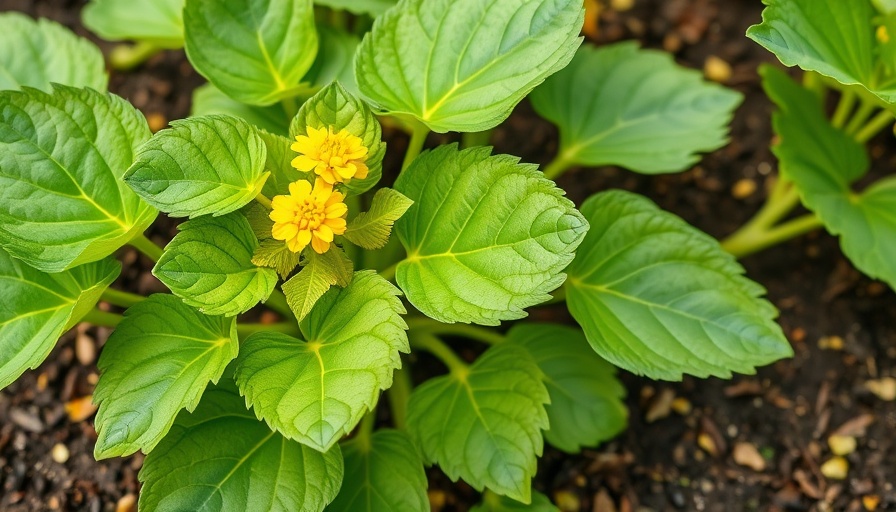
Start Your Gardening Journey with Flavorful Crops
For many homeowners drawn to the prospect of fresh food and vibrant life in their backyards, starting a garden can seem daunting. However, embarking on this journey doesn't need to be overwhelming. In fact, engaging in food gardening can be one of the most rewarding decisions you make—not only for your health but also for your taste buds and wallet.
The Perfect First Crop: Tomatoes
Tomatoes, with their vibrant colors and multitude of varieties, are often the first love of beginner gardeners. They’re known as a gateway crop because they are relatively easy to cultivate and provide quick rewards, maturing in a span of just 70 to 100 days. Imagine the thrill of watching hard work blossom into juicy fruits—there’s little more satisfying than that!
To ensure a successful tomato harvest, follow these essential tips: choose determinate varieties suited for container gardening, start with seedlings for quicker yields, and offer your plants support with cages or stakes. Not only does this prevent issues like fungal disease, but it also leads to a more fruitful harvest. When the tomatoes are fully colored and slightly soft, twist them off the vine, celebrating your first gardening success!
Lettuce: The Fast-Track to Fresh Greens
If you're craving quick results, lettuce is your answer. This leafy green thrives in a range of conditions and can be grown in virtually any garden type—from raised beds to containers. With some varieties maturing within just 30 days, you can start slicing fresh salads in no time. Additionally, lettuce is fantastic for novices, as it requires minimal maintenance and is quite forgiving.
Plant your lettuce in a cool part of your garden where it can thrive, and make sure it gets adequate watering to keep the leaves crispy and fresh. The great part about harvesting lettuce is that you can often pick just what you need, leaving the rest to continue growing, which allows for a staggered harvest.
Basil: An Herb to Cultivate Confidence
What better way to cultivate your gardening skills than with herbs? Among them, basil stands out as an excellent introduction to the world of herb gardening. It thrives even in smaller spaces, can be grown indoors or outdoors, and adds delightful flavor to meals. More than just a culinary asset, tending to basil boosts confidence as you learn key gardening skills like pruning and watering effectively.
Positin your basil where it can receive plenty of sunlight and ensure it’s well-drained to avoid waterlogged roots. By harvesting basil regularly, you can encourage bushier growth, bringing you even more chances to enjoy its heartening aroma and flavor.
Radishes: The Quickest of Harvests
Radishes can mature in as little as 25 days, making them one of the fastest crops you can grow. They're not just easy; they're also incredibly versatile and attractive—flamboyantly colored roots peek out from under the soil, highlighting the success of your efforts.
Plant radish seeds directly into moist, well-tilled soil and watch your garden spring to life. They lack the need for extensive care, requiring only regular water and minimal spacing. Plus, you won't just enjoy your radishes in salads; many varieties also make delicious pickles, allowing you to preserve your hard work.
Peppers: Colorful Additions to Your Garden
Bringing a burst of color to your garden, peppers—whether sweet or spicy—are another fantastic choice for beginners. They come in an array of shapes and sizes, ensuring your garden is as beautiful as it is productive. Growing peppers requires some attention to warm temperatures, as they thrive best during warmer months. Starting them indoors and transplanting them later can give you a head start on the season.
Utilize pots or containers for your pepper plants if space is an issue. Providing support like cages or stakes keeps them from bending over under the weight of their growing fruits. With proper care, you'll be ready to indulge in fresh salsa or stuffed peppers before the season ends!
Final Thoughts on Your Gardening Adventure
Turning your gardening dreams into reality begins with planting the right crops. As you nurture your plants and watch them flourish, you’ll not only enjoy fresh produce but also create a rewarding hobby. No need for extensive knowledge or space; simply follow the direct advice this article provides to start your gardening adventure on the right foot.
As you build on your gardening skills, consider trying new crops and techniques to keep the process fresh and exciting. Each plant journey you embark on is an opportunity to learn and grow in both your gardening abilities and your knowledge of nutrition. With a few easy crops like tomatoes, lettuce, basil, radishes, and peppers, you can transform your outdoor space and bring incredible flavors straight from your garden to your table!
Now is the time to dig in and explore the wonders of gardening. Don’t let inexperience hold you back; embrace your green thumb and cultivate a masterpiece of your own.
 Add Row
Add Row  Add
Add 




Write A Comment